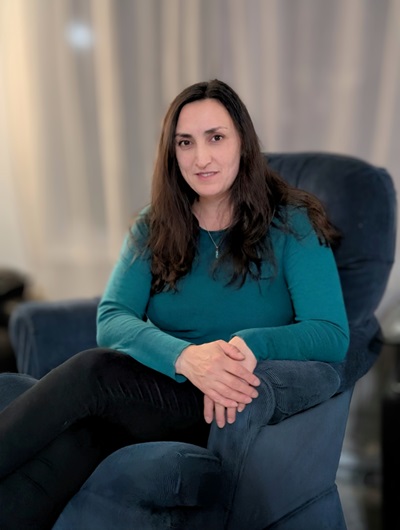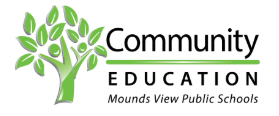- MN ABE Connect
- Archive
- From Aspiration to Achievement: One Paraprofessional’s Journey to Credentialing Success
 March 31, 2025
March 31, 2025
From Aspiration to Achievement: One Paraprofessional’s Journey to Credentialing Success
Amanda Tall, Career Certifications TeacherAre your Adult Education students interested in working in education? Paraprofessionals are always in demand, offering a meaningful career path that supports young learners while providing opportunities for growth and a living wage.
Paraprofessional Pathway
Titles for paraprofessionals vary by district, including paraeducator, teacher assistant, education support professional (ESP), and education assistant. They may be considered instructional or non-instructional, with ONE of the following qualifications required for instructional paraprofessionals in Minnesota:
- At least two years of college credits (60 in Minnesota) from an accredited institution OR
- An associate’s degree or higher OR
- A passing score on an approved assessment demonstrating proficiency in reading, writing, and math
Minnesota’s approved assessments and their passing scores are:
- Paraeducator assessments: 65% (Instructional Support) and 70% (Knowledge and Application)
- ParaPro assessment: 460 combined score
Upon successful completion of the ParaEducator Online or ParaPro, students earn their Highly Qualified Certificate. This never expires, and gives prospective paraprofessionals the qualifying credential needed to work academically with students in the classroom.
Many Minnesota ABE programs offer Paraprofessional prep classes. Classes typically include access to the Paraeducator assessment, featuring lessons for both test preparation and to prepare for working in a school setting. Read more about available test and training options on the ATLAS website.
 Working as a Paraprofessional: A Journey of Growth and Gratitude
Working as a Paraprofessional: A Journey of Growth and Gratitude
For many, working as a paraprofessional is more than just a job—it’s a calling. This is especially true for Stella, who arrived in the United States in 2017 in search of new opportunities. Originally from Georgia (the country, not the state), she speaks Georgian, Russian, and English. Being multilingual has been an incredible asset in her role as a para, allowing her to connect deeply with students and families.
Embracing Multilingualism in Education
When she first began working in schools, Stella expressed concern that her English fluency might be a challenge. However, she quickly learned that her ability to speak multiple languages was not a barrier but a bridge. Whether interpreting for families or encouraging students to teach her new words, she uses language as a tool for building confidence. Her go-to phrase? “Show me how to say that.” This approach helps students feel empowered and represented in their learning journey.
A New Perspective on Education
Having experienced a different school system in Georgia, Stella deeply appreciates the abundance of resources in U.S. schools. She acknowledges that when everything is readily available, it can be easy to take things for granted. However, her background has instilled in her a profound sense of gratitude. She encourages students to recognize and value the opportunities they have.
A Career Rooted in Connection
Before becoming a paraeducator, Stella studied to become a therapist in Georgia. She originally considered becoming a school counselor, believing she would prefer working with young adults. However, she soon discovered a love for working with younger children. “I love hugs,” she says with a smile. Her passion for numbers also plays a role in her daily work, as she incorporates it into teaching both academic and social skills.
Beyond academics, her role involves behavior management and fostering emotional intelligence in students. She believes that people can only share what they possess in the first place—whether it’s love, anger, or attention. With this in mind, she approaches her work with patience and understanding, helping children navigate their emotions in a healthy way.
Advice for Aspiring Paraprofessionals
For those considering a career as a paraprofessional, Stella emphasizes the importance of:
- Having a strong foundation in academics
- Developing a teacher’s sense of authority and patience
- Learning to ask for help
- Not taking things personally
“Don’t be so hard on yourself,” she advises. “Every day is a learning experience.”
Looking to the Future
While she has considered pursuing a teaching license, Stella values the deep, one-on-one connections she builds with students as a paraprofessional. She worries that transitioning into a teaching role might take away the close interactions she cherishes. For now, she is happy in her role, finding joy in the daily victories—whether academic, social, or simply a warm hug from a student.
Through her journey, Stella exemplifies resilience, gratitude, and a deep commitment to education. Her story is a great example of the impact paraprofessionals have in shaping young minds, one student at a time.
Learn More
Stella’s story is just one success story from an Adult Education student who entered the education field through a paraprofessional program.
Read more about resources related to the ParaEducator credential on the ATLAS website.
You can also learn more about the ParaEducator credential and other credentials by attending the Statewide Virtual Conference on April 11, 2025!

Newsletter Signup
Get MN ABE Connect—the official source for ABE events, activities, and resources!
Sign UpArticle Categories
- ABE Foundations/Staff Onboarding
- ACES/Transitions
- Adult Career Pathways
- Assessment
- CCR Standards
- Citizenship
- COVID-19
- Cultural Competency
- Digital Literacy/Northstar
- Disabilities
- Distance Learning/Education
- ELA
- Equity/Inclusion
- ESL
- HSE/Adult Diploma
- Listening
- Math/Numeracy
- Mental Health
- Minnesota ABE
- One-Room Schoolhouse/Multilevel
- Professional Development
- Program Management
- Reading
- Remote Instruction
- Science
- Social Studies
- Speaking/Conversation
- Support Services
- Teaching Strategies
- Technology
- Uncategorized
- Volunteers/Tutors
- Writing